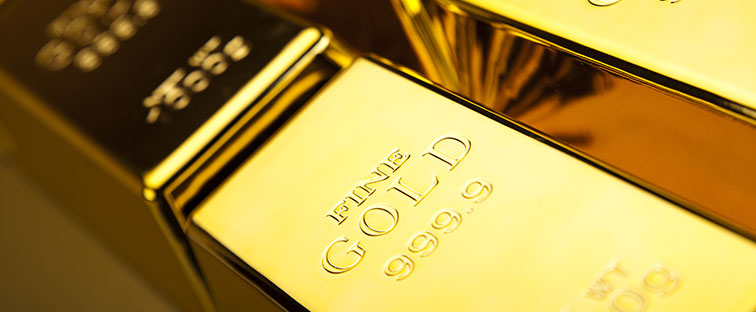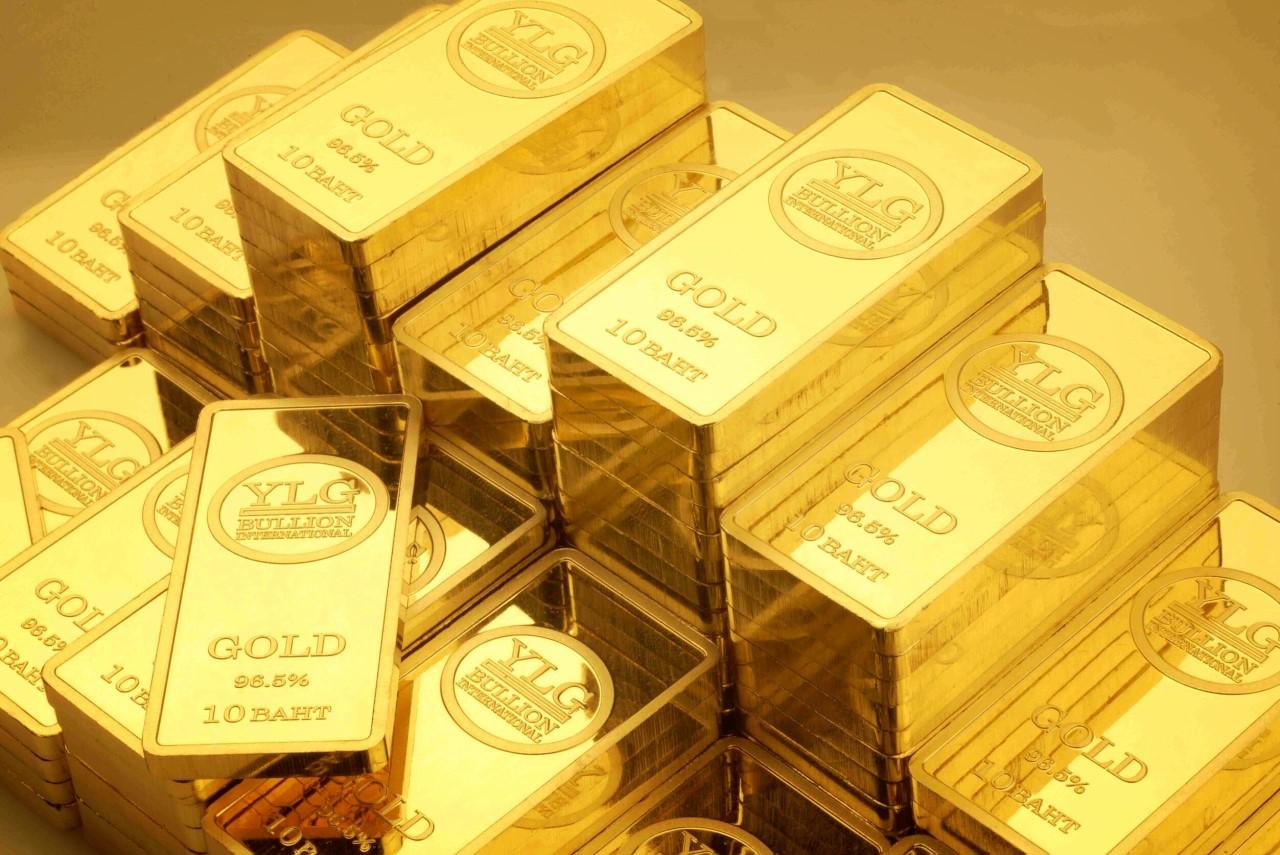A self-directed IRA (Individual Retirement Account) is a retirement account that allows individuals to have more control and flexibility over their investment choices. Unlike traditional IRAs that are typically managed by financial institutions and limited to investment options such as mutual funds and stocks, a self-directed IRA allows individuals to invest in a wider range of alternative assets, including physical gold and other precious metals. With a self-directed IRA, individuals can take advantage of tax benefits and diversify their retirement portfolios by including tangible assets like gold. This alternative investment can act as a hedge against inflation and economic uncertainty, as the price of gold often moves independently from the stock market. However, it’s important to note that self-directed IRAs may require the involvement of a custodian or trust company to ensure compliance with IRS regulations and navigate the complexities of managing alternative investments.
Advantages of Investing in Gold Through an IRA
Investing in gold with an IRA offers several benefits that can contribute to a secure and diversified retirement portfolio. Gold has long been recognized as a stable and secure investment, making it an appealing option for those looking to protect their wealth. One of the key advantages of including gold in your IRA is the potential for price growth. Over the years, gold prices have shown steady increases, making it an attractive asset for long-term investors.
Diversification is another advantage of investing in gold with an IRA. By adding gold to your retirement portfolio, you can reduce the risk associated with relying solely on stocks and bonds. Gold has a low correlation with other asset classes, meaning it tends to perform differently during market fluctuations. This can help protect your investments and potentially increase overall returns.
Security is a crucial aspect of investing in gold with an IRA. Physical gold is a tangible asset that you can hold in your hands, providing a sense of security that is not present with other investments. Additionally, investing in gold with an IRA allows you to store your gold in IRS-approved secure facilities, ensuring its safety.
Gaining knowledge about investing in gold with an IRA.
Gold offers several advantages as an investment, including stability, diversification opportunities, and security. This precious metal has a low correlation with other asset classes, providing a hedge against market fluctuations. Additionally, physical gold provides a tangible asset that can be stored in IRS-approved facilities, ensuring its safety. Investing in gold with an IRA allows individuals to take advantage of the potential for price growth while enjoying the tax advantages and flexibility of an IRA. By understanding the basics of investing in gold with an IRA, individuals can make informed decisions to protect and grow their retirement savings.

Types of Gold Eligible for Investment
Several types of gold are eligible for investment in a self-directed IRA Gold. These include physical gold options such as gold coins, gold bars, and bullion coins. Gold coins are a popular choice and can include American Eagle coins, Canadian Maple Leaf coins, and South African Krugerrand coins, among others. Gold bars, on the other hand, are typically available in various sizes and can range from small bars to larger ones. Bullion coins are also eligible for IRA investment and are valued based on their gold content.
In addition to gold, self-directed IRAs also allow for investment in other precious metals such as silver coins and palladium bullion. Silver coins, like gold coins, can include American Eagle coins and Canadian Maple Leaf coins, among others. Palladium bullion, which is a rare metal, is another option for diversifying an IRA portfolio.
When investing in physical gold or precious metals within an IRA, certain specifications and requirements must be met. This includes purchasing gold or precious metals from an approved precious metals dealer, storing the metals in an IRS-approved depository, and complying with IRS regulations regarding contribution limits and minimum distributions.
Investing in physical gold and precious metals can provide a hedge against inflation and economic uncertainty, making it an attractive option for retirement savings. It’s important to work with a financial institution or self-directed IRA custodian that specializes in alternative assets and can assist with the setup and ongoing management of a self-directed gold IRA.
Setting Up a Self-Directed IRA for Gold Investments
Setting up a self-directed IRA for gold investments requires a few key steps to ensure compliance with IRS regulations. The first step is to choose a reputable custodian that specializes in self-directed IRAs and has experience with alternative assets such as gold. These custodians can assist in setting up the account and managing the ongoing administration.
Once a custodian is chosen, funding options need to be considered. Direct contributions can be made to the self-directed IRA, allowing individuals to contribute a portion of their income to the account. Another option is rolling over funds from an existing retirement account, such as a 401(k) or traditional IRA, into the self-directed IRA for gold investments.
When purchasing gold for an IRA, it is important to ensure that it meets the IRS requirements. The gold must have a minimum purity level of 99.5% for bullion bars and 99.9% for bullion coins. Additionally, the gold must be purchased from an approved precious metals dealer and stored in an IRS-approved depository.
Setting up a self-directed IRA for gold investments can provide individuals with the opportunity to diversify their retirement portfolios and hedge against economic uncertainty. By working with a reputable custodian and adhering to IRS guidelines, investors can confidently navigate the process of incorporating gold into their self-directed IRA.
Finding a Trust Company or Custodian
When establishing a self-directed IRA for gold investments, it is important to find a reliable trust company or custodian to handle the account. Custodians are typically financial institutions, such as banks or brokerage firms, that have been approved by federal and/or state agencies to provide custodial services for retirement accounts.
To find a reliable custodian for a self-directed IRA, individuals can research and compare the services and fees offered by different companies. It is important to consider factors such as the company’s reputation, experience in handling self-directed IRAs, and expertise in handling gold investments.
When choosing a trust company or custodian, individuals should carefully review their fees, customer reviews, and the level of support and guidance they provide throughout the investment process. It is crucial to select a custodian that understands the complexities of self-directed IRAs and can provide the necessary expertise and resources for successful gold investments within a retirement account.
By conducting thorough research and choosing a reputable trust company or custodian, individuals can be confident in their ability to navigate the complexities of self-directed IRAs and make sound gold investment decisions for their retirement savings.
Evaluating Precious Metals Dealers
When it comes to investing in precious metals, it is crucial to partner with a reliable and reputable precious metals dealer. Evaluating precious metals dealers requires careful research and consideration of several factors.
One important aspect to consider is whether the dealer belongs to industry trade groups such as the American Numismatic Association (ANA), Industry Council for Tangible Assets (ICTA), or Professional Numismatists Guild (PNG). Membership in these groups signifies a commitment to ethical business practices and a dedication to upholding industry standards.
Furthermore, individuals should thoroughly research the dealer’s reputation and customer reviews. This can provide insights into the dealer’s reliability, transparency, and customer service. It is important to select a dealer that has a proven track record of providing accurate information and delivering high-quality products.
In addition, investors should consider the types of precious metals that a dealer offers. Common options for investment include gold, silver, platinum, and palladium. Each metal has different purity requirements, so it is essential to ensure that the dealer offers products that meet these specifications.
By conducting thorough research, looking for membership in industry trade groups, and considering the types of precious metals offered, investors can make informed decisions when selecting a precious metals dealer. This helps to ensure a secure and reliable investment in precious metals.
Cost Considerations and Tax Advantages
Firstly, there are special costs involved in owning gold within an IRA. These include seller’s fees, which are charged by the dealer when purchasing the gold. Retirement account setup fees may also apply, as there are administrative tasks involved in adding gold to an IRA. Additionally, custodian fees are incurred to maintain the IRA and ensure compliance with IRS regulations. Storage fees are necessary if the investor chooses to store the gold in an approved depository. Finally, cash-out costs may be applicable if the investor decides to sell the gold and withdraw the funds from the IRA.
However, despite these costs, investing in gold with an IRA offers tax advantages. Contributions made to a traditional IRA are often tax-deductible, meaning that investors can lower their taxable income by contributing to their IRA. This can result in immediate tax savings. Furthermore, any growth in the value of the gold within the IRA is tax-deferred until withdrawn during retirement. This allows the investment to compound over time without being subject to annual taxes.
Factors In Investing in Gold with an IRA
Investing in gold with a self-directed IRA can diversify a retirement portfolio and protect against inflation. However, there are factors to consider before choosing this investment strategy. Understanding costs like setup fees, seller’s fees, and storage fees is crucial. On the other hand, gold investments in an IRA offer tax advantages, such as potential tax deductions and tax-deferred growth. It’s important to weigh costs against tax benefits and consider long-term investment goals before deciding. Also, staying updated on gold prices and the economic climate helps with timing decisions. By considering these factors, individuals can make the most of their self-directed IRA and potentially benefit from gold’s unique characteristics in their retirement portfolio.

Assessing Risk and Hedging Against Inflation
When it comes to investing, assessing risk and hedging against inflation are crucial considerations. One option to achieve these goals is by investing in gold with an Individual Retirement Account (IRA).
Gold has long been seen as a hedge against inflation and a haven investment during market downturns. Unlike traditional investments like stocks and mutual funds, gold can provide stability and preservation of purchasing power during times of economic uncertainty.
Assessing risk is an important step in any investment decision. When investing in gold with an IRA, it’s essential to consider your risk tolerance and diversify your portfolio. Gold can be a valuable addition to a well-diversified retirement portfolio as it has historically demonstrated a low correlation to other assets like stocks and bonds.
In times of market volatility, gold can act as a buffer, protecting your wealth and providing a sense of security. Its value tends to rise when the stock market falls, making it an effective means of hedging against downturns.
By carefully assessing risk, understanding your risk tolerance, and diversifying your portfolio with assets like gold, you can enhance the stability and long-term growth potential of your retirement savings. Investing in gold with an IRA can offer tax advantages and the flexibility to make investment decisions based on your individual goals.
As always, it is advisable to consult with a financial advisor or IRA custodian to understand the guidelines, contribution limits, and any transaction fees associated with investing in gold with an IRA.
Diversifying Retirement Portfolios with Alternative Assets
Investing in gold with a self-directed IRA can be a powerful strategy for diversifying retirement portfolios and safeguarding wealth. With the ability to invest in alternative assets, self-directed IRAs provide individuals with greater flexibility and control over their retirement savings.
Including gold in a retirement portfolio offers several potential benefits. Firstly, gold has historically demonstrated a low correlation with traditional investments like stocks and bonds. This means that when stocks are falling, gold often rises in value, providing a hedge against market volatility. By diversifying with gold, investors can potentially reduce the overall risk of their portfolio and protect against downturns.
In addition to gold, self-directed IRAs allow for investment in various alternative assets. These can include silver coins, bullion coins, gold bars, and even alternative investments like real estate, private equity, or cryptocurrencies. By including a mix of different assets, investors can further diversify their portfolio and potentially enhance its overall performance.
To effectively diversify retirement portfolios with gold and other alternative assets, it’s important to assess risk tolerance and set clear investment goals. Investors should consider the tax advantages and potential risks associated with each asset class. Working with a reputable self-directed IRA custodian or financial institution can provide guidance and expertise in navigating the complexities of alternative asset investments.
Protecting Retirement Funds from Economic Uncertainty
Investing in a self-directed gold IRA can provide individuals with a valuable tool for protecting their retirement funds from the uncertainties of the economy. As economic conditions change and market turbulence ensues, the value of traditional investments like stocks and bonds can be significantly impacted. However, gold has long been recognized as a haven asset that can act as a hedge against inflation and market turmoil.
Gold has a proven track record of maintaining its value over time, even during periods of economic uncertainty. When the economy is in turmoil or experiencing high levels of inflation, gold often rises in value, providing a stable and reliable source of protection for retirement funds. By including gold in a self-directed IRA, investors can effectively hedge against the potential erosion of their savings caused by economic uncertainty.
Furthermore, diversifying retirement portfolios with alternative assets like gold can offer additional benefits. Gold has historically demonstrated a low correlation with traditional investments, meaning that it often moves independently of stocks and bonds. This lack of correlation allows gold to add an extra layer of diversification to a retirement portfolio, potentially reducing overall risk and cushioning against market volatility.
When investing in gold, it is crucial to choose the right depository to securely store these precious metal assets. Reputable depositories offer a secure and insured environment to safeguard investors’ gold holdings. They protect against theft, damage, or loss, ensuring that retirement funds are preserved for future use.
To navigate the complexities of investing in a self-directed gold IRA, it is advisable to work with a trusted self-directed IRA custodian or financial institution. They possess the expertise and knowledge necessary to guide investors through the process and help them make informed investment decisions.
Monitoring Prices and Transaction Fees
When investing in a self-directed gold IRA, it’s vital to keep a close eye on prices and transaction fees to ensure the profitability of your investment. The prices for gold and silver fluctuate based on live spot prices, which can significantly impact the returns on your investment. By monitoring prices regularly, you can make informed decisions about buying or selling your precious metals.
In addition to monitoring prices, it’s crucial to be aware of the various transaction fees associated with gold IRAs. These fees can include seller’s fees when purchasing or selling gold, retirement account setup fees charged by the custodian or financial institution, custodian fees for their services, storage fees to securely house your precious metals, and cash-out costs should you choose to liquidate your investment.
Understanding and considering these transaction fees is essential to ensure that you maximize the returns on your investment and minimize unnecessary costs. When choosing a self-directed IRA custodian or financial institution, it’s essential to inquire about their fee structure and compare it with other providers.
By monitoring prices and carefully considering transaction fees, you can make informed decisions about your self-directed gold IRA investment strategy while prioritizing profitability and minimizing unnecessary costs.
Conclusion
In conclusion, investing in gold with a Self-Directed IRA can offer potential rewards, such as diversification and a hedge against inflation. However, it also comes with risks, including limited access to stored precious metals, higher fees, and funding restrictions. It is crucial to weigh these factors before making investment decisions and to consult with a reliable financial advisor to ensure that you optimize the benefits and minimize the drawbacks of investing in gold IRAs.
